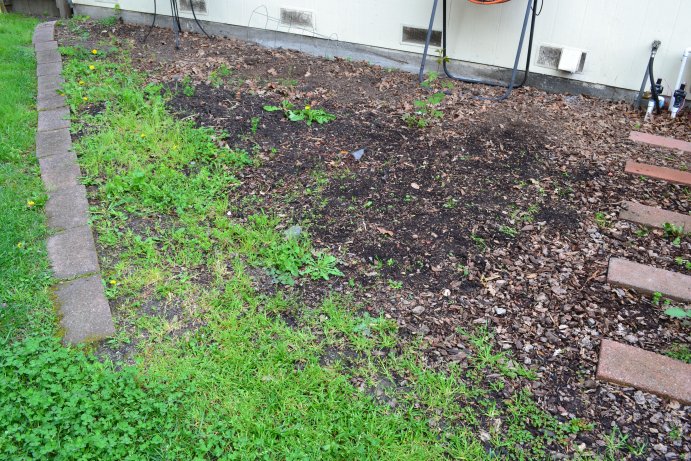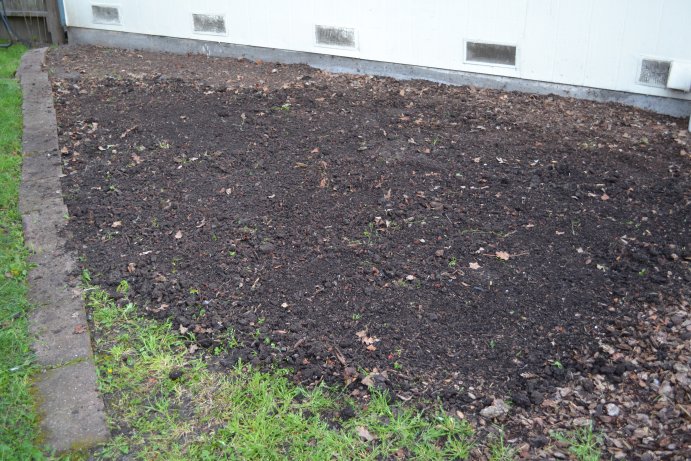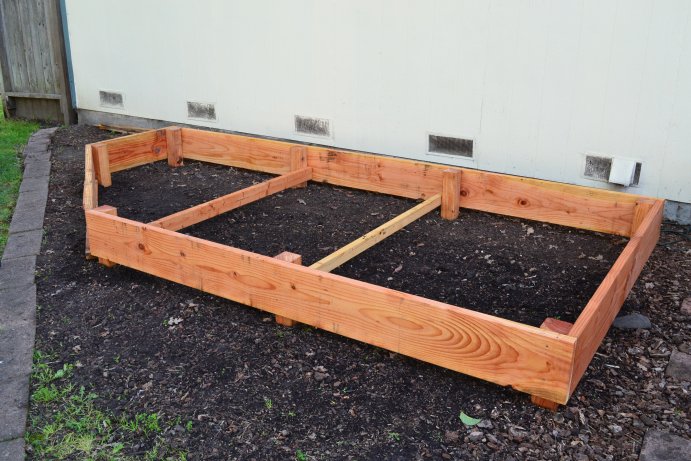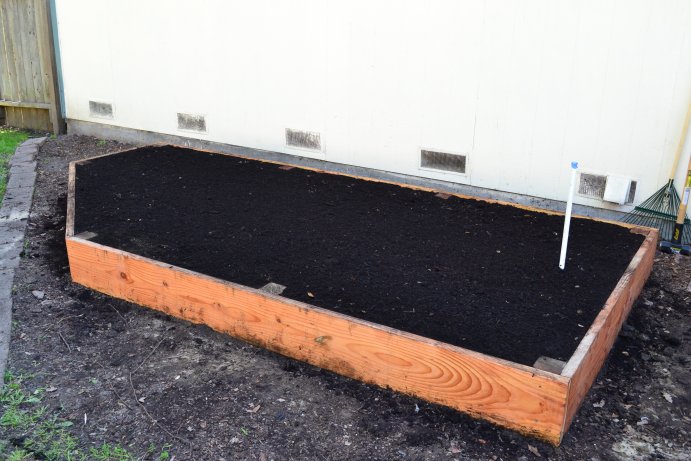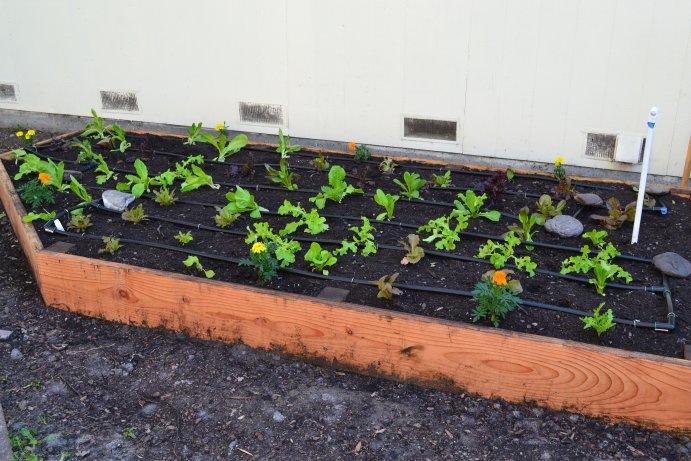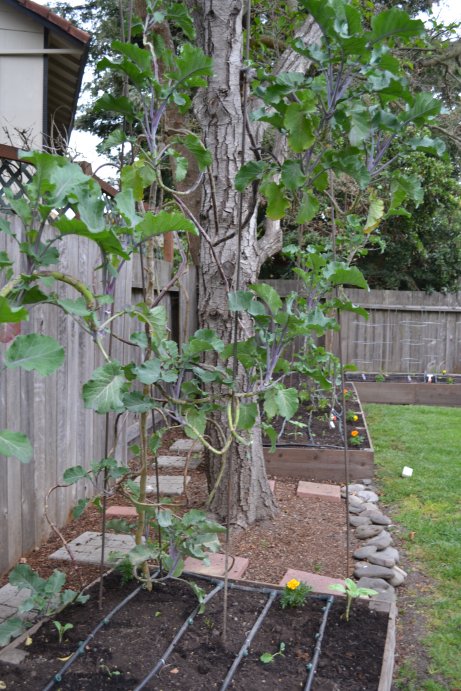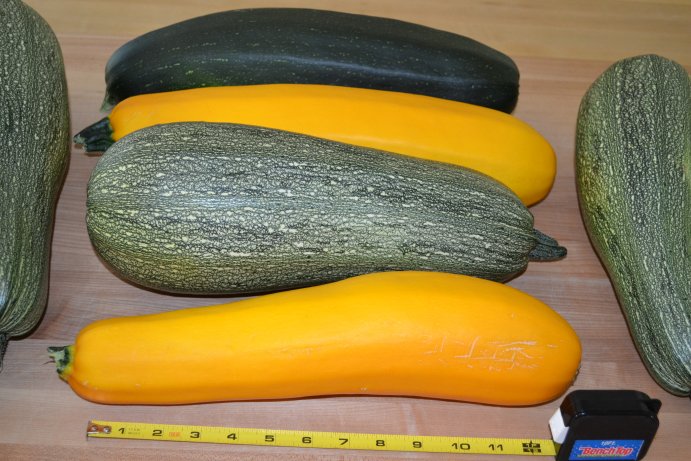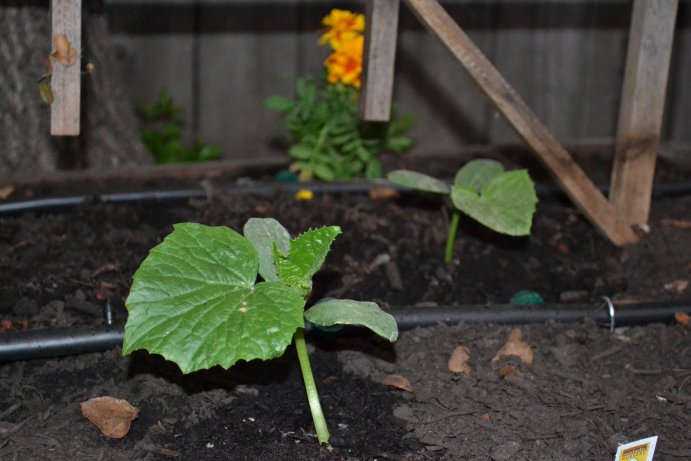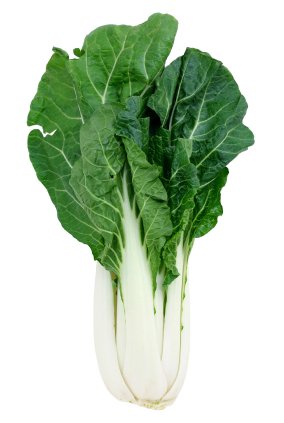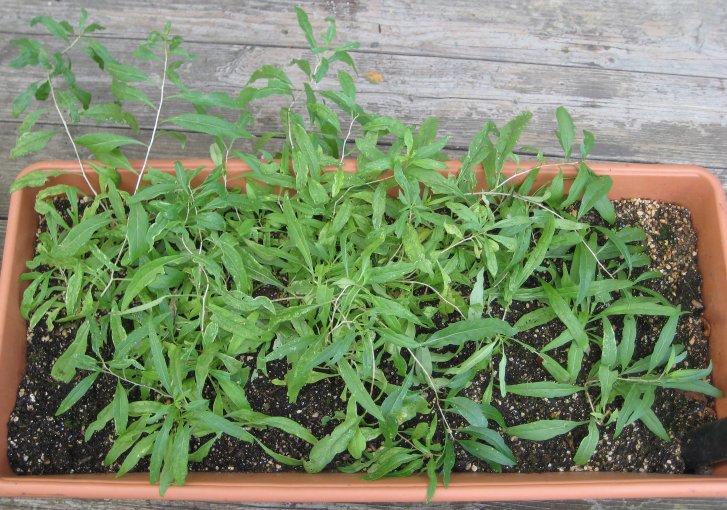One of the best ways to keep in touch with us is to join our email list. You’ll receive a free copy of Our Top 12 Strategies for Long Term Success on A Raw Plant-Based Diet eBook along with regular information about raw food and plant-based diets and periodic promotions for our classes, events, and other offerings!
What is so great about dandelion greens?
One of the best ways to keep in touch with us is to join our email list. You’ll receive a free copy of Our Top 12 Strategies for Long Term Success on A Raw Plant-Based Diet eBook along with regular information about raw food and plant-based diets and periodic promotions for our classes, events, and other offerings!
Enhance Your Raw Food Diet with Home Grown Produce!
Spring is in the air and gardening season has begun in our home! Some of the many joys a raw food enthusiast experiences in Springtime are: preparing soil in raised beds to grow favorite garden vegetables, choosing the perfect vegetable starts, then planting them and watching them grow throughout the season. Harvest time is always exciting, too, as we reap the “fruits of our labor” (and the vegetables, too!).
Plant leafy greens for optimal nutrition
This year, in order to pack our raw vegan diet with optimal nutrition, we’ve planted a plenitude of leafy greens, including several types of lettuce, frisée (curly endive), dandelion greens, arugula, two types of kale, and two types of collard greens. The lettuce varieties we planted are heirloom varieties of green leaf, red leaf, red Romaine, green Romaine, and red oak leaf. Lettuce, frisée, and dandelion greens are all members of the sunflower family (Asteraceae), while arugula, kale, and collard greens are members of the cabbage family (Brassicaceae). Members of this plant family are also known as cruciferous vegetables, and include broccoli, cauliflower, maca, turnip, rutabaga, Brussels sprouts, watercress, red and green cabbage, bok choy, and Napa cabbage.
We’ve also planted several varieties of tomatoes, including some of the heirloom varieties we love, like Pineapple tomatoes, Cherokee Purple, Green Zebra, Brandywine, and several different types of cherry tomatoes. Several tomato varieties love heat, and we planted those in our yard on the south side of the house, which is warmer than the rest of our yard and more sheltered from the wind. Tomatoes are part of the nightshade family (Solanaceae) along with bell peppers, eggplant, potatoes, tomatillos, goji berries, Incan berries, jalapeño peppers, and other hot pepper varieties.
Plant mints in containers for best results
We have quite a few plants from the mint family in our yard this year, including several types of basil and four types of mint. Mints have a tendency to grow and spread prolifically. Early in my gardening career I made the mistake of planting mint in my raised beds and found out the hard way that mint plants have a tendency to “take over” the garden. This year, I learned from past experience and planted the mints in half wine barrels to keep them appropriately contained. However, if you want a very aromatic ground cover, Corsican Mint is a beautiful choice. A couple of years ago, I planted it in a makeshift herb garden in a non-grassy area of my yard. It has since spread and creates a deliciously fragrant chocolate mint addition to the area. It may surprise you to know that Chia seeds are another member of the mint family famously popular in the raw food community!
On the other hand, most types of basil stay localized in their growth habit, so I plant basil directly in my raised beds. They make a lovely companion planting next to the tomatoes, and the two are a perfect culinary combination, especially in Italian cuisine.
Fruit-bearing plants in our yard include two types of lemon trees and a fig tree, which is already producing numerous small figs. The fig tree is only five years old, and has already been producing numerous baskets of figs for the last three seasons. Since we adore figs, we’re really looking forward to harvest time later this year!
Plant fruits and vegetables no matter where you live
This is a small sampling of the foods we are currently growing in our yard and garden. We enjoy being able to create more diversity in our raw food diets and growing foods we enjoy that can be harder to find in the grocery store aisles. Even more importantly, we notice a big difference in the taste and quality of the foods we grow compared to the ones we buy. We suggest growing fruits and vegetables—you’ll be well rewarded in both taste and nutritional value. Before we had a back yard, we grew vegetables and fruits on our apartment patio, and sprouts, greens, and grasses near a window in our dining room. There are so many ways to grow your own food, and at harvest time, you’ll be grateful that you made the worthwhile effort. Happy gardening!
One of the best ways to keep in touch with us is to join our email list. You’ll receive a free copy of Our Top 12 Strategies for Long Term Success on A Raw Plant-Based Diet eBook along with regular information about raw food and plant-based diets and periodic promotions for our classes, events, and other offerings!
Video on Jerusalem artichokes: nutrient content, gardening experience, and an easy recipe
One of the best ways to keep in touch with us is to join our email list. You’ll receive a free copy of Our Top 12 Strategies for Long Term Success on A Raw Plant-Based Diet eBook along with regular information about raw food and plant-based diets and periodic promotions for our classes, events, and other offerings!
My Top 5 Favorite Leafy Greens
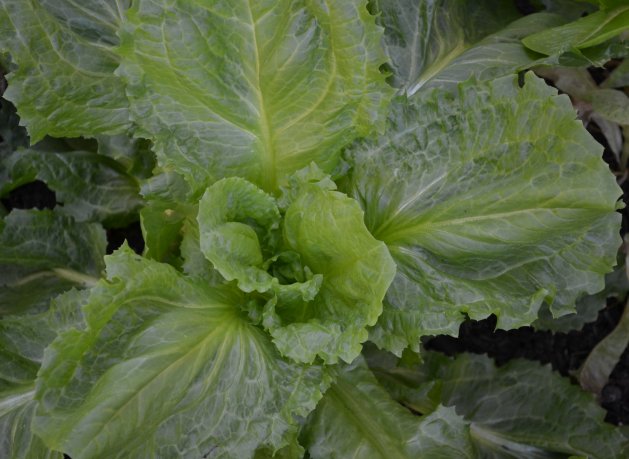
1. Lettuce
From the beginning of my raw food journey in 1990, lettuce has been one of my go-to leafy greens. I love the mild taste and versatility of lettuce, which often forms the basis for my salad recipes. Before my interest in raw food developed, I knew of one type of lettuce: iceberg. This changed quickly as I learned of the many varied types of lettuce including grocery store mainstays such as Romaine, green leaf, red leaf, and Boston. When I started shopping at farmers markets and growing my own food several years ago, I became familiar with lesser known and heirloom varieties of lettuce that expanded my lettuce repertoire further. Right now, Rick and I have 8 varieties of lettuce growing in our backyard garden. Lettuce is a member of the sunflower plant family.
2. Dandelion Greens
Dandelion greens are popularly consumed as an early spring green, but I personally love dandelion greens year round, and enjoy them in my salads, smoothies, and juices. The mineral content of dandelion greens is notable and rivals kale in calcium content. Dandelion greens are in the sunflower plant family (Asteraceae), along with lettuce, endive, escarole, frisée greens, sunflower seeds, and Jerusalem artichokes.
3. Tree Collard Greens
Rick and I planted several collard plants in our garden when moved into our house a few years ago, and they are still going strong and producing beautiful large deep green leaves, year round in northern California. What we love about our tree collards is that they are relatively low maintenance and are a reliable source of greens for us. We enjoy greens from our tree collard plants mostly in smoothies, but occasionally put them in juice or a salad. These tree collard greens are tender and easily digestible for us in comparison to collard greens we find in the grocery store that generally have a tougher consistency. Our tree collards are now about 12 feet tall and still growing, with numerous leaves that can measure up to 8 inches in diameter or more. Collard greens, like other members of the cabbage family (Brassicaceae) contain noteworthy amounts of certain minerals.
4. Kale
Kale is most certainly one of our many favorite leafy greens and a backyard garden staple. I first became interested in kale when I discovered its impressive calcium and iron content, which is not surprising, given that kale is a member of the cabbage family. Members of the cabbage plant family are also called “cruciferous”, in reference to the cross-like appearance of their flowers, or “brassica” vegetables, reflecting their plant family name Brassicaceae. Rick and I enjoy kale in smoothies, juices, soups, and many other recipes. Since we like to have a variety of foods in our diet, we rotate our leafy greens to enjoy the diversity of flavors, textures, and nutrients offered by different leafy greens. For example, we might have kale as our main leafy green on one day, dandelion greens the next, frisée greens the next, and so forth.
5. Escarole
Rick and I recently returned home from traveling, visiting, and teaching on the east coast to find that the tiny escarole starts we planted in September had grown into huge plants, with 9-inch diameter leaves, at the largest. Given the size of the leaves, this escarole would make great wraps. We have found that escarole grows well in cooler weather, so the size of our plants is not a surprise, given that it is mid-November.
Escarole is in the sunflower plant family, so its strong resemblance to some lettuce varieties is justified. I have found that the taste of escarole can vary, for example, the escarole growing in our yard has a more mild taste than the more bitter versions I have found in grocery stores and farmers markets.
Here are some of the nutrient highlights of escarole:
| 3 cups chopped escarole (150 g) | Adult Daily Values | |
| Calories | 25.5 | |
| Calcium | 78 mg | 1000 – 1200 mg |
| Iron | 1.24 mg | 8 – 18 mg |
| Zinc | 1.18 mg | 8 – 11 mg |
One of the best ways to keep in touch with us is to join our email list. You’ll receive a free copy of Our Top 12 Strategies for Long Term Success on A Raw Plant-Based Diet eBook along with regular information about raw food and plant-based diets and periodic promotions for our classes, events, and other offerings!
Video Series of How We Constructed a Raised Bed Garden: Parts 5 and 6 and Harvest Time!
Here are our most recent videos documenting our raised bed garden project. Since we live in northern California, we have dry summers and need to have an irrigation system to water our plants, which is especially handy when we are out of town teaching. This video shows the installation of the irrigation timer:
We have been harvesting the lettuce from our raised bed for a couple of weeks now – it is incredibly fresh and flavorful and has grown surprisingly quickly. Here is a video progress report:
Our raised bed is almost complete. The remaining aspect of this project is designing and finalizing the area around the bed to blend its appearance with the rest of our backyard. We will post a video when this final aspect of the project is finished. Have a great week!
One of the best ways to keep in touch with us is to join our email list. You’ll receive a free copy of Our Top 12 Strategies for Long Term Success on A Raw Plant-Based Diet eBook along with regular information about raw food and plant-based diets and periodic promotions for our classes, events, and other offerings!
Video Series of How We Constructed a Raised Bed Garden: Parts 3 and 4 and Garden Update
A couple of days ago, I returned from being out of town visiting family on the east coast to see that our lettuce had grown significantly since we planted it three weeks ago:
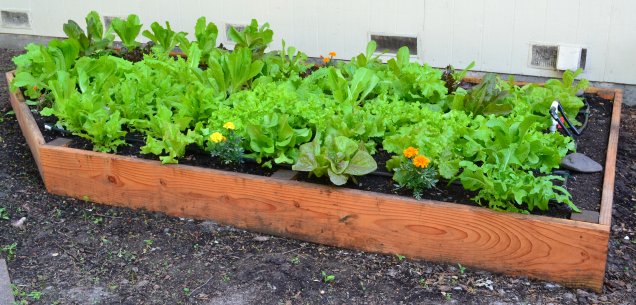
For comparison, here is the size of the lettuce when we planted it:
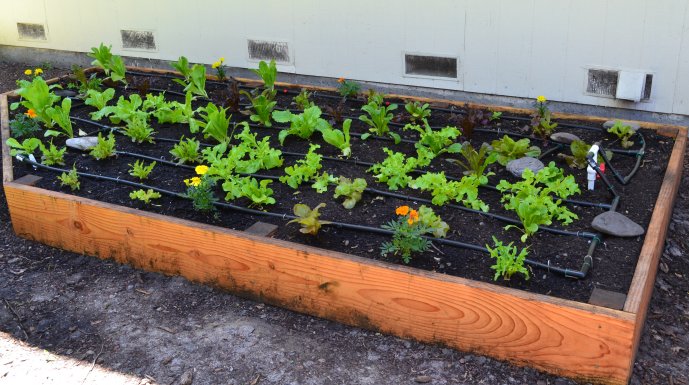
In less than a month, we are already reaping the benefits of our efforts on this several day project! The lettuce is so vibrant and fresh, and without a doubt we feel that the time and energy we put into this project was more than well worth it.
Now, on to the latest videos:
Here is video number 3 showing the planting and irrigation setup for the lettuce bed:
Here is video number 4 showing the ball valve and drip emitter installation:
Next week: Part 5 of this video series, showing the installation of the irrigation timer.
One of the best ways to keep in touch with us is to join our email list. You’ll receive a free copy of Our Top 12 Strategies for Long Term Success on A Raw Plant-Based Diet eBook along with regular information about raw food and plant-based diets and periodic promotions for our classes, events, and other offerings!
Video Series of How We Constructed a Raised Bed Garden: Parts 1 and 2
As we wrote in this blog last week, Rick and I recently converted a weedy unused area of our backyard into a raised bed garden for our lettuce plants.
Part 1 shows the planning of our raised bed:
Part 2 shows the construction of our raised bed:
Next week, we will post parts 3 and 4, showing the installation of the irrigation system and planting of the lettuce.
One of the best ways to keep in touch with us is to join our email list. You’ll receive a free copy of Our Top 12 Strategies for Long Term Success on A Raw Plant-Based Diet eBook along with regular information about raw food and plant-based diets and periodic promotions for our classes, events, and other offerings!
Ready, Set, Grow!
 Rick and I have been growing vegetables in backyard raised beds for the past few years and have learned much from our experience. One thing we have learned and observed first hand is the self-evident notion that some plants thrive in areas of our yard that have more sun, while other plants grow better in shady areas. Case in point: lettuce. The lettuce we have grown tends to wilt in the hot afternoon sun regardless of how much water we give the plants.
Rick and I have been growing vegetables in backyard raised beds for the past few years and have learned much from our experience. One thing we have learned and observed first hand is the self-evident notion that some plants thrive in areas of our yard that have more sun, while other plants grow better in shady areas. Case in point: lettuce. The lettuce we have grown tends to wilt in the hot afternoon sun regardless of how much water we give the plants.
What we historically did for this challenge was to shade the lettuce with large beach and patio umbrellas. Of course, gardening stores do sell shades specific for this purpose, but this year we came up with a more permanent solution, which was to build a raised bed for the lettuce in an area of our yard that gets some sun in the morning, but is shady during the hottest part of the day, the afternoon. This location will be especially important as the growing season progresses and the daily temperature rises.
The area where we built the lettuce bed is adjacent to our house, and in the morning until about midday, the lettuce receives sunlight and then as the sun moves across our yard in the afternoon, our house shades the lettuce. So far so good! The lettuce has been growing beautifully, but the real test will be later in the season as summer approaches.
Here are some photos showing the transformation of an unused weedy area into our lettuce bed!
Here is the area weeded and leveled for construction of the bed:
Here is the bed:
With added soil:
With plants and irrigation tubing:
A couple days later, the irrigation tubing is hooked into the system, drip emitters are installed, and lettuce plants are growing!
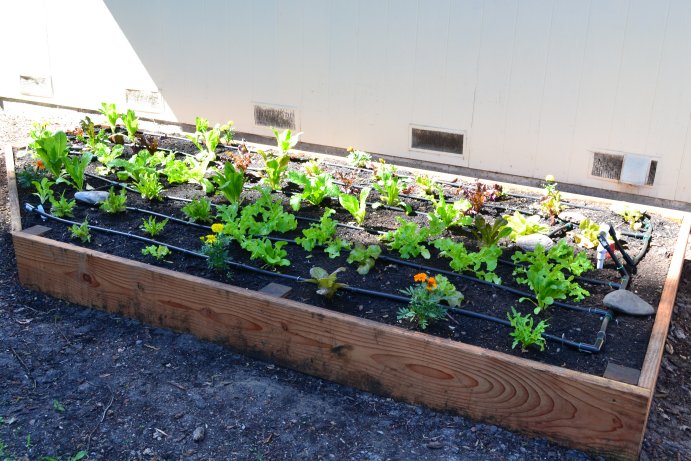
We'll post updates as the season progresses and stay tuned for a series of videos documenting the building of our lettuce bed!
One of the best ways to keep in touch with us is to join our email list. You’ll receive a free copy of Our Top 12 Strategies for Long Term Success on A Raw Plant-Based Diet eBook along with regular information about raw food and plant-based diets and periodic promotions for our classes, events, and other offerings!
Collard Greens and Tree Collard Greens
April 1st is upon us and here in northern California, Rick and I have been preparing our backyard raised beds for planting. This year, we are planting many of our garden staples such as heirloom tomatoes, squash, bell peppers, basil, and some plants we have not grown before, such as mizuna and stinging nettle. One plant that grows year round in our garden is tree collard greens. We have several tree collard plants that have been in our garden since we moved into our house a few years ago, and they are still going strong and producing beautiful large deep green leaves.
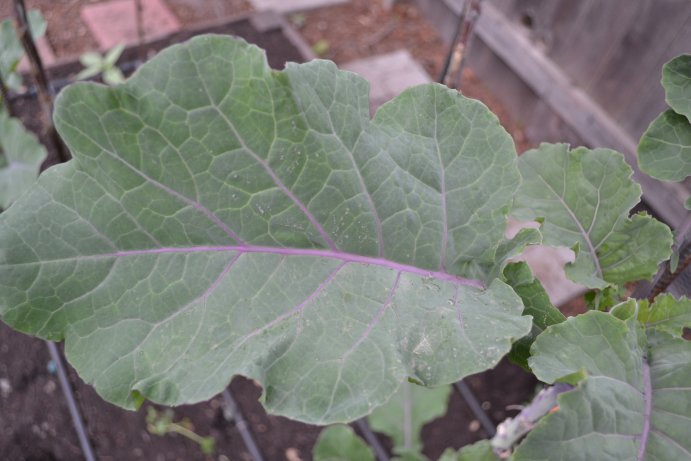
What we love about our tree collards is that they are relatively low maintenance and are a reliable source of greens for us. Of course, we rotate our greens for variety so we are planting a variety of other greens in our garden this year, which we will cover in another blog post or video. We enjoy greens from our tree collard plants mostly in smoothies, but occasionally may put them in juice or a salad. These collard greens are tender and easily digestible for us in comparison to collard greens we find in the store that have a tougher consistency. We have observed over the years, that the greens that we grow in our garden tend to be softer and more tender than commercially available greens. Although this may not be true across the board, this is just an observation from our own personal experience.
Here is a sampling of the nutrients found in regular collard greens:
| 3 cups chopped collard greens (108 g) | Adult Daily Values | |
| Calories | 32.4 | |
| Calcium | 156.60 | 1000 – 1200 mg |
| Potassium | 182.52 | 4700 mg |
| Folate | 179.28 | 400 mcg |
| Beta carotene | 4149.36 mcg |
How do these numbers compare to the nutrients found in actual tree collard greens? We have yet to know, given that I have not yet been able to find neutral information on the nutrients measured in actual tree collard leaves. I would not be surprised if they are similar. This is the beauty of science and research, there is much that is known and much that has yet to be known. Happy spring!
One of the best ways to keep in touch with us is to join our email list. You’ll receive a free copy of Our Top 12 Strategies for Long Term Success on A Raw Plant-Based Diet eBook along with regular information about raw food and plant-based diets and periodic promotions for our classes, events, and other offerings!
Backyard sunflower plant and sunflower seeds
In April, I planted several sunflower starts in our backyard in hopes that by August we would have tall, beautifully blooming sunflowers that eventually would yield sunflower seeds. One of these sunflower plants started out as the smallest, and for a while, I was concerned that it might not make it. Eventually, the plant got stronger as it grew, 4 feet then 6 feet, 12 feet, wow – I was amazed at this point, then 14 feet where it stopped growing upward and began to produce a future sunflower bloom (botanically called an infloresence, which is a cluster of individual flowers). We waited excitedly, checked on the plant regularly, and then one morning, the petals began to retract to show a stunning bright yellow sunflower.
Here is the opening:

It took several days for the sunflower to fully open and then the seeds within the bloom began to grow larger, and in the process, increased the size of the bloom.
Here is the full opening:
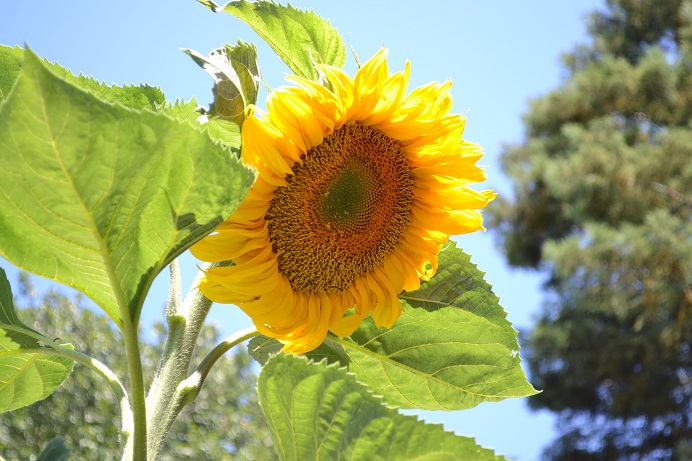
Here is a close up of the seeds:

Each little seed has a flower at the tip that must be individually pollinated for the seed to fully mature. Later this season, we will harvest the seeds and save some for next year, or maybe grow some sunflower sprouts. Once in a while, we enjoy having shelled sunflower seeds in recipes or just by themselves.
Here is a short nutrient analysis of sunflower seeds:
| Nutrient | Shelled sunflower seeds - ¼ cup, 35 g | Adult Daily Values |
| Calories | 204.4 | |
| Protein | 7.27 g | |
| Thiamin (Vitamin B1) | 0.52 | 1.1 – 1.2 mg |
| Riboflavin (Vitamin B2) | 0.12 | 1.1 – 1.3 mg |
| Niacin (Vitamin B3) | 2.92 | 14 – 16 mg |
| Calcium | 27.3 | 1000 – 1200 mg |
| Iron | 1.84 | 8 – 18 mg |
| Magnesium | 113.8 | 310 – 420 mg |
| Potassium | 225.8 | 4700 mg |
| Zinc | 1.75 | 8 – 11 mg |
| Selenium | 18.55 | 55 mcg |
I am always looking for plant-based sources of selenium, and was pleased to find that sunflower seeds are a notable source. The richest plant source of selenium that I have found so far is Brazil nuts. Here is an article that I wrote that shows the selenium content of Brazil nuts.
One of the best ways to keep in touch with us is to join our email list. You’ll receive a free copy of Our Top 12 Strategies for Long Term Success on A Raw Plant-Based Diet eBook along with regular information about raw food and plant-based diets and periodic promotions for our classes, events, and other offerings!
Chocolate mint banana ice cream and nutrient analysis of peppermint
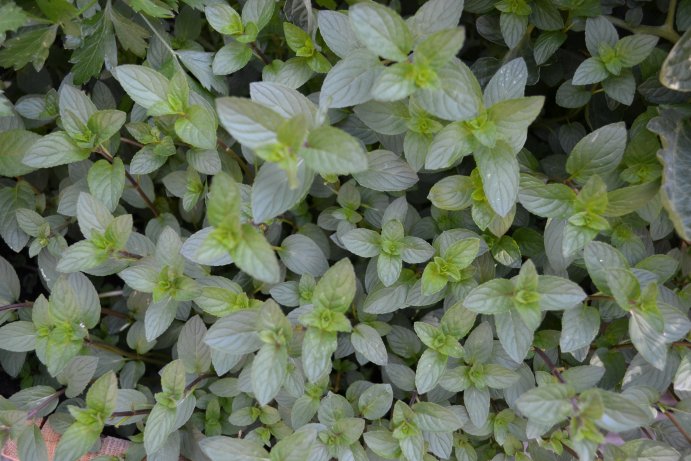
Chocolate, did someone say chocolate?! Yes, chocolate mint, which is one of the many types of mint that one can find in their search for mint plants. In my journeys to various nurseries and plant sales, I have seen the obvious peppermint and spearmint, along with other more exotic types of mint including chocolate mint, and so many more.
I personally love chocolate mint – the fragrance stays true to its name and the flavor to me has a mild peppermint flavor. I currently have chocolate mint and several other types of mint growing in a planter on our deck and find myself enjoying the fragrance of the mint plants whenever I venture into our backyard garden. I have yet to find information on the nutrient content of chocolate mint, so here is a nutrient analysis of its close relative, peppermint, which contains small amounts of important nutrients:
| Fresh peppermint leaves, 10 | Adult Daily Values | |
| Calories | 0.35 | |
| Calcium | 1.22 | 1000 – 1200 mg |
| Magnesium | 0.40 | 310 – 420 mg |
| Potassium | 2.85 | 4700 mg |
I know, nutrient-wise peppermint is rather unremarkable, but Rick and I have found it can really add some zing to frozen recipes especially on hot summer days like today.
Speaking of frozen recipes, I was recently inspired by the fragrance and taste of chocolate mint to create a fun and simple recipe that Rick loves:
Chocolate mint banana ice cream (1 – 2 servings)
3 peeled frozen bananas
10 medium leaves of chocolate mint
There are many ways that Rick and I have made this ice cream. We have used a food processor, high powered blender, and twin-gear juicer. Today, I used the food processor. First, I gathered 10 leaves of chocolate mint from the garden, and then cut 3 frozen bananas into pieces about this size:
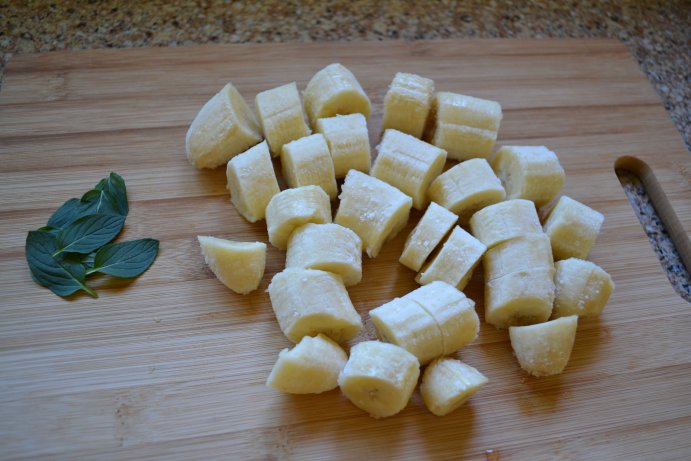
Next, I placed the banana pieces and the chocolate mint leaves into the food processor and placed the lid on the container. I blended the bananas and chocolate mint leaves using short pulses until the mixture became more homogenous:
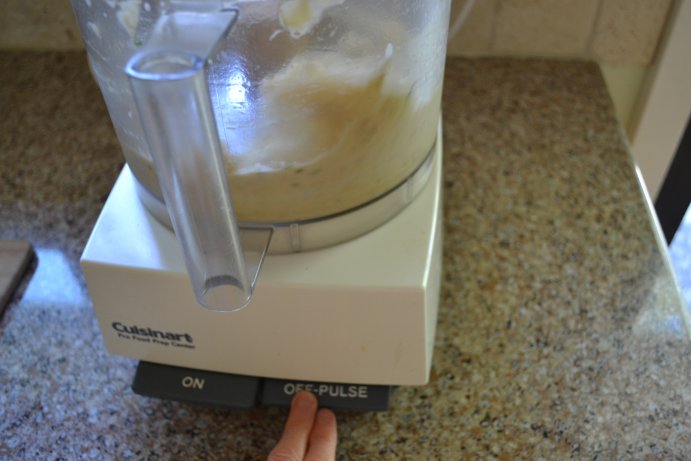
I then blended the mixture continuously until smooth:
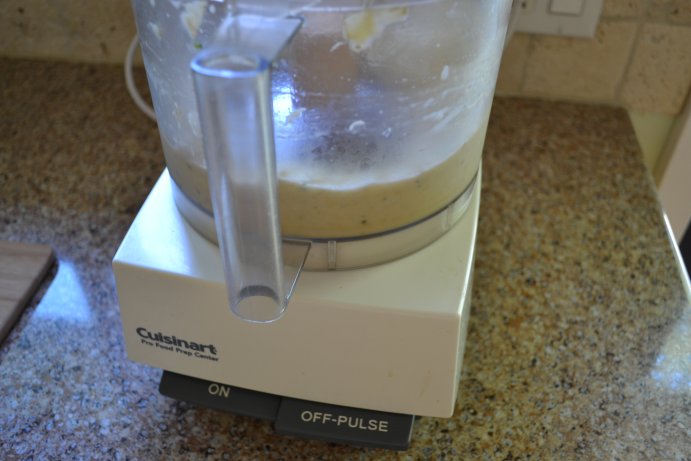
I then scooped the mixture into a serving bowl and placed into the freezer for about 5 minutes to let the mixture freeze. Today was a really hot day, so the mixture was a little runny after blending. Freezing for a few minutes after blending keeps the ice cream from melting before serving. When Rick and I were ready to eat the ice cream, we removed the mixture from the freezer and served with a chocolate mint garnish:
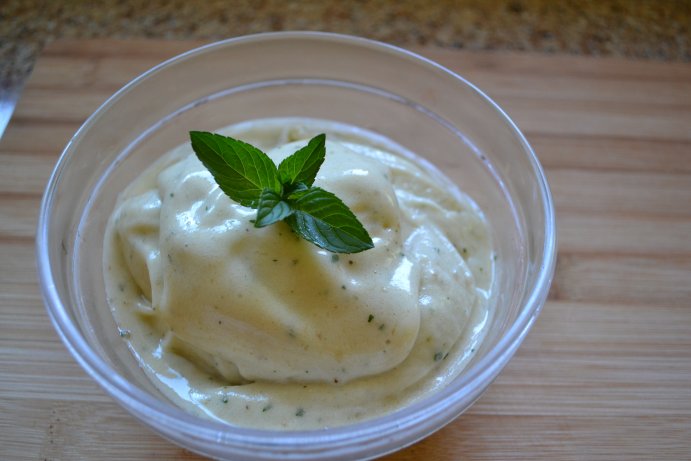
This recipe makes one medium serving or two small servings. Of course, one can make more or less depending on how much one would like to have – Rick likes to eat a lot more than this! 🙂
One of the best ways to keep in touch with us is to join our email list. You’ll receive a free copy of Our Top 12 Strategies for Long Term Success on A Raw Plant-Based Diet eBook along with regular information about raw food and plant-based diets and periodic promotions for our classes, events, and other offerings!
Front yard citrus and a recipe for green lemonade with nutrient analysis
 Whew, what a sense of accomplishment! Rick and I spent a large part of this weekend working on a front yard garden project – planting lemon bushes and a lime tree! We have wanted to do this project for so long, and finally took some time out of our very busy work schedule to do some landscaping that yields these two of our favorite fruits.
Whew, what a sense of accomplishment! Rick and I spent a large part of this weekend working on a front yard garden project – planting lemon bushes and a lime tree! We have wanted to do this project for so long, and finally took some time out of our very busy work schedule to do some landscaping that yields these two of our favorite fruits.
When we moved into our house, our front yard had numerous rose bushes with lovely flowers. After a period of time, we noticed that the blooms started to disappear. I would notice rosebuds on the verge of opening on one day, only to find the bud gone the next. Puzzling – why would a rosebud disappear? This occurrence became increasingly frequent, to the point where it was rare to see flowers or buds on our front yard rose bushes. We had a hunch about what was happening to our roses, but it wasn’t until one morning when I woke up for no particular reason around 4 am. I looked out one of our front windows to find a large deer feasting on our rose bushes! Just as we suspected, which hardly surprised us, given that we live near open space.
We have always loved lemons and limes, so we thought that they would make an attractive addition to our yard and replacement for the roses. About a month ago, we purchased 4 lemon bushes and a lime tree and set aside this past weekend for planting. Since our purchase, the lemon bushes have flowered and have small lemons growing on them! We really like the idea of landscaping that is both attractive and productive. Our neighbors with citrus plants have not had a problem with deer eating them, but we will see what happens. In the meantime, we are excited about the new additions to our yard! To celebrate, here is a recipe for green lemonade (aka my favorite green juice):
8 stalks of celery (12” long)
1 medium lemon, peeled
3 medium cucumber, 8” long
This recipe makes about 48 ounces of juice, depending on the ingredients. Here is a nutrient analysis of the juice ingredients:
| Green lemonade ingredients | Adult Daily Values | |
| Calories | 241.7 | |
| Calcium | 371.1 | 1000 – 1200 mg |
| Iron | 4.1 | 8 – 18 mg |
| Zinc | 2.5 | 8 – 11 mg |
| Magnesium | 180.4 | 310 – 420 mg |
| Potassium | 2774.5 | 4700 mg |
| Vitamin C | 85.7 | 70 – 90 mg |
| Vitamin B1 (Thiamin) | 0.38 | 1.1 – 1.2 mg |
| Vitamin B2 (Riboflavin) | 0.61 | 1.1 – 1.3 mg |
| Vitamin B3 (Niacin) | 2.61 | 14 – 16 mg |
| Folate | 256.8 | 400 mcg |
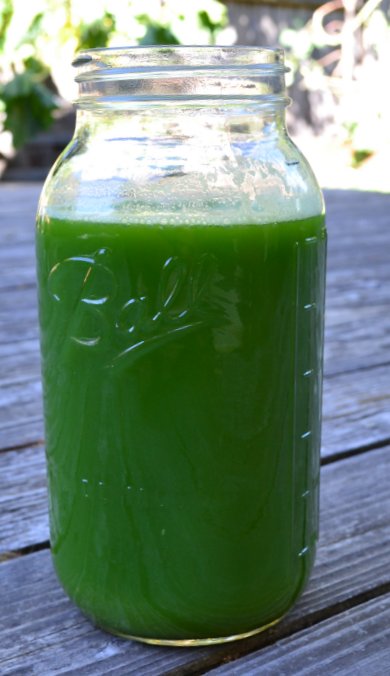
One of the best ways to keep in touch with us is to join our email list. You’ll receive a free copy of Our Top 12 Strategies for Long Term Success on A Raw Plant-Based Diet eBook along with regular information about raw food and plant-based diets and periodic promotions for our classes, events, and other offerings!
Five Things One Can Do With Summer Squash
This week, Rick and I returned home from teaching out of town to find that many our small, six-inch long zucchini squash had grown to over a foot long! There was quite a bit of heat in our area while we were gone, so we weren’t too surprised, but now we are left with a dilemma – what to do with so many huge summer squash. Here are five ideas:
1. Shred into salad – Simple and one of our all-time favorite ways to enjoy summer squash. Rick especially loves summer squash in his salad.

2. Use in dressing – Summer squash is a great ingredient to help add volume to a salad dressing. For example, we use summer squash to increase the volume of our miso-tahini-lemon dressing which is a great strategy to decrease the fat content per volume of a higher fat dressing.
- Our recipe: Juice of ½ lemon, 2 tablespoons tahini (we like raw tahini), ½ teaspoon chickpea miso, 2 cups chopped summer squash. Blend in blender until smooth.
3. Make spiralized summer squash pasta – Have a pasta party! Here is a blog post with recipes for squash pasta and sauce.

4. Steam them – This helps to soften the toughness of large summer squash skin. We enjoy steaming large summer squash and adding some avocado for consistency and flavor. This recipe reminds me of the steamed summer squash mom used to make when I was young.
5. Share the wealth – We are now in the process of trying 🙂 to share our squash with neighbors and friends. Resoundingly, they have said “hey, thanks for the month supply” (smile) and asked “how can we prepare these?” See 1 – 4 for ideas.
Nutrient analysis of summer squash – all varieties:
| Summer squash – 2 cups chopped (226 g) | Adult Daily Values | |
| Beta carotene | 271 mcg | |
| Vitamin B1 (Thiamin) | 0.11 | 1.1 – 1.2 mg |
| Vitamin B2 (Riboflavin) | 0.32 | 1.1 – 1.3 mg |
| Vitamin B3 (Niacin) | 1.10 | 14 – 16 mg |
| Folate | 65.5 | 400 mcg |
| Calcium | 33.9 | 1,000 – 1,200 mg |
| Magnesium | 38.4 | 310 – 420 mg |
| Potassium | 592.1 | 4,700 mg |
Summer squash may not be a nutrient powerhouse, but it certainly can provide contributory amounts of certain key nutrients, such as the B vitamins listed on the chart above, calcium, magnesium, and potassium.
One of the best ways to keep in touch with us is to join our email list. You’ll receive a free copy of Our Top 12 Strategies for Long Term Success on A Raw Plant-Based Diet eBook along with regular information about raw food and plant-based diets and periodic promotions for our classes, events, and other offerings!
Arugula, a leafy green with zing …
Years ago, when I started to become interested in health and nutrition, I became acquainted with arugula by accident. At the time, admittedly I was not very well educated about leafy greens, given that iceberg lettuce and spinach formed the boundaries of my leafy green literacy.
One day, in produce area of my local natural food store, I bagged several heads of lettuce, finished my shopping and returned home. Later, while making a salad, I discovered that I had mistakenly purchased one bunch of arugula leaves instead of a head of lettuce. I tried it and found that I really liked the mildly spicy flavor. Nowadays, I enjoy arugula occasionally in my salads and smoothies. I especially find arugula to be a salad-friendly leafy green due to the mildly spicy taste and tenderness of the leaf, unlike stronger tasting and more fibrous leafy greens.
Arugula is a member of the cabbage family, making it a botanical relative of kale, broccoli, cauliflower, bok choy, and cabbage. Like many other members of this plant family, the mineral content of arugula is significant, especially calcium:
| Arugula – 4 cups chopped | Adult Daily Values | |
| Calories | 20 | |
| Calcium | 128.0 | 1000 – 1200 mg |
| Iron | 1.17 | 8 – 18 mg |
| Zinc | 0.38 | 8 – 11 mg |
| Magnesium | 37.6 | 310 – 420 mg |
| Potassium | 295.2 | 4700 mg |
Considering that 4 cups of arugula contains 20 calories, the content of the nutrients listed above are notable. This sample of arugula also contains 77.6 mcg of folate and 2.06 g of protein.
The arugula plants growing in my yard recently flowered:
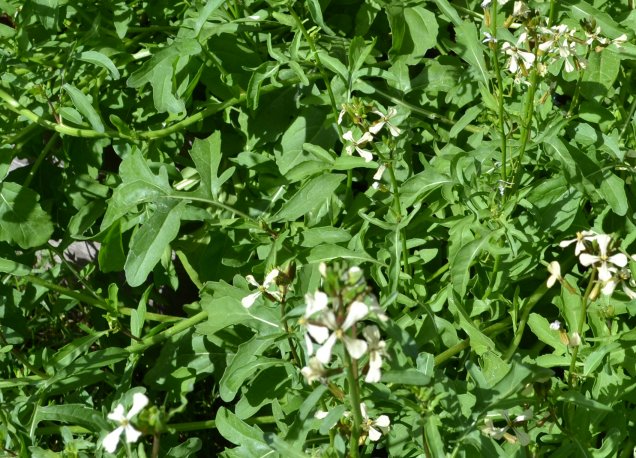
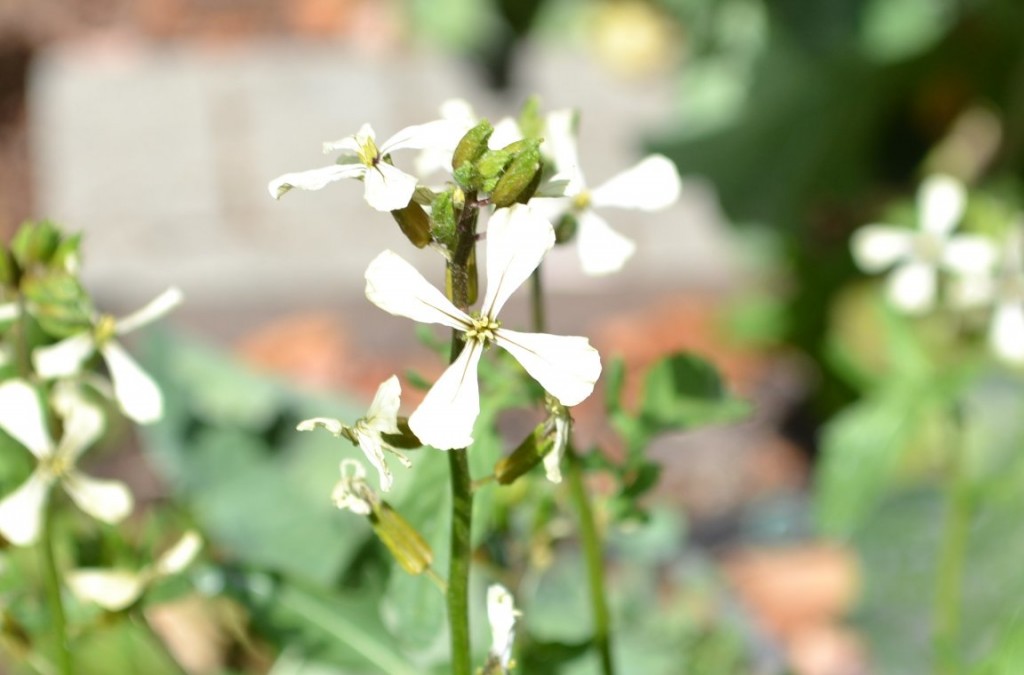
One of the best ways to keep in touch with us is to join our email list. You’ll receive a free copy of Our Top 12 Strategies for Long Term Success on A Raw Plant-Based Diet eBook along with regular information about raw food and plant-based diets and periodic promotions for our classes, events, and other offerings!
Basil – beautiful, aromatic, and nutrient dense?
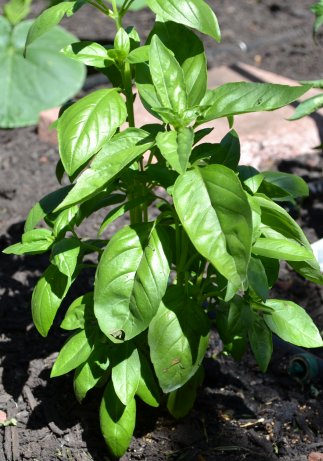 Rick and I returned home after being out of town for almost two weeks to find that many of plants in our garden had almost tripled in size, especially our basil plants. I love basil. I love the taste. I love the fragrance. I love how well it grows in my garden, etc. And, I am amazed by its calcium content:
Rick and I returned home after being out of town for almost two weeks to find that many of plants in our garden had almost tripled in size, especially our basil plants. I love basil. I love the taste. I love the fragrance. I love how well it grows in my garden, etc. And, I am amazed by its calcium content:
| Basil – ½ cup chopped fresh | Adult Daily Values | |
| Calories | 21.2 | |
| Calcium | 37.5 | 1000 – 1200 mg |
| Iron | 0.67 | 8 – 18 mg |
| Magnesium | 13.6 | 310 – 420 mg |
| Potassium | 66.5 | 4700 mg |
I enjoy basil in my salads and lots of other dishes that I make. I often use about ½ cup chopped fresh basil in my salads, which can provide a contributory amount of calcium, and other nutrients to my diet. Considering that ½ cup of chopped fresh basil has a little over 21 calories, the amounts of the minerals listed above per calorie is notable.
Basil is a member of the mint family, also known as the Lamiaceae. Other members of the mint family include peppermint, spearmint, lemon balm, oregano, marjoram, rosemary, etc. I have grown numerous members of the mint family, and from my experience, many of these plants can grow and spread rather prolifically. Therefore, I currently grow mint family plants in containers to keep them from spreading throughout my garden. In my garden, I have found that basil does not spread as much as other mint family plants, so I grow it alongside my tomatoes.

There are many types of basil that I have grown in past years including: Thai basil, cinnamon basil, and my all-time favorite, sweet basil. Here is a photo of our raw food recipe for sweet basil with spiralized zucchini and marinara sauce:
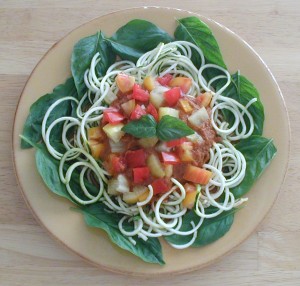
Here is the recipe:
Marinara Sauce (one serving)
2 medium fresh tomatoes (2 cups chopped)
6 soaked sun dried tomatoes (1 ounce dry or 28.3 g)
½ tsp. dried oregano or other Italian spices
1 medjool or other type of date
¼ ripe avocado
Blend fresh tomatoes, spices, date, and avocado in blender, then add soaked sundried tomatoes and blend until smooth. For a lower fat recipe, leave out avocado. For garlic lovers, add ¼ clove of fresh garlic.
Zucchini pasta
To make zucchini pasta, we used a vegetable spiralizer. In general, for spiralizing, we like to use squash or zucchini that is younger in order to create softer noodles. We added the noodles to a bed of sweet basil and topped with marinara sauce, chopped bell pepper, and chopped heirloom tomato.
One of the best ways to keep in touch with us is to join our email list. You’ll receive a free copy of Our Top 12 Strategies for Long Term Success on A Raw Plant-Based Diet eBook along with regular information about raw food and plant-based diets and periodic promotions for our classes, events, and other offerings!
The Often Overlooked Cucumber
Admittedly, I am biased - I am a huge fan of cucumbers. I love their delicate flavor, their watery consistency, and their culinary versatility. Cucumbers make regular appearances in my green juices, salads, and other recipes. English and Japanese cucumbers are my favorites for making spiralized vegetable pasta, along with zucchini and gold bar squash, whereas slicing cucumbers are mainstays in my green juice recipes. Last weekend, I planted three of my favorite varieties of cucumbers in our garden: English, Japanese and lemon cucumbers:
Many of our Science of Raw Food nutrition students have mentioned that they have thought of cucumbers as being a “filler” ingredient in juices and recipes, and not a nutrition powerhouse. Judge for yourself, here is a nutrient analysis of one 8 ¼” long cucumber:
| One cucumber | Adult Daily Values | |
| Calories | 45 | |
| Calcium | 48.2 | 1000 – 1200 mg |
| Iron | 0.85 | 8 – 18 mg |
| Zinc | 0.60 | 8 – 11 mg |
| Magnesium | 39.1 | 310 – 420 mg |
| Potassium | 442.5 | 4700 mg |
| Protein | 1.96 g |
Considering that one cucumber is only 45 calories, the nutrient per calorie ratio for the nutrients stated above is definitely notable, particularly for both calcium and potassium.
When I make green juice, I generally use 3 large cucumbers in addition to the other ingredients:
| Three 8 ¼” cucumbers | Adult Daily Values | |
| Calories | 135.5 | |
| Calcium | 144.5 | 1000 – 1200 mg |
| Iron | 2.53 | 8 – 18 mg |
| Zinc | 1.81 | 8 – 11 mg |
| Magnesium | 117.4 | 310 – 420 mg |
| Potassium | 1327.4 | 4700 mg |
| Protein | 5.87 g |
The amount/percentage of these nutrients that actually makes it into the juice is not yet known, but I am looking forward to seeing studies done on the nutrient content of fresh juice versus the ingredients used to make the juice sometime in the future. This would be great information for juicing enthusiasts to know! Until then, I will continue to enjoy my green juice.
For one of my green juice recipes, see the celery post on this blog.
One of the best ways to keep in touch with us is to join our email list. You’ll receive a free copy of Our Top 12 Strategies for Long Term Success on A Raw Plant-Based Diet eBook along with regular information about raw food and plant-based diets and periodic promotions for our classes, events, and other offerings!
Bok Choy: Minerals and More…
I have been a huge fan of bok choy for many years, especially after I saw the nutrient content of this lovely leafy green:
| Bok choy – 3 cups chopped | Adult Daily Values | |
| Calories | 27.30 | |
| Calcium | 220.5 | 1000 – 1200 mg |
| Iron | 1.68 | 8 – 18 mg |
| Zinc | 0.40 | 8 – 11 mg |
| Magnesium | 39.9 | 310 – 420 mg |
| Potassium | 529.2 | 4700 mg |
| Folate | 138.6 | 400 mcg |
| Vitamin C | 94.5 | 75 – 90 mg |
| Protein | 3.15 |
Three cups of bok choy contains notable amounts of calcium, vitamin C, folate, and potassium. The calcium content of bok choy is exceptional among leafy greens and plant foods in general.
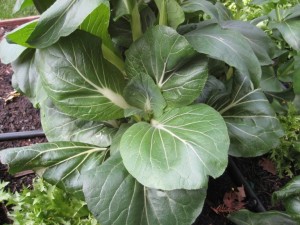
Bok choy is a member of the cabbage plant family, also known as the Brassicaceae. Other members of this plant family include kale and broccoli, which are also known for their notable calcium content. The cabbage family used to be known as the Cruciferae, which was originally named for the cross-like appearance of the flower petals among members of this plant family.
The bok choy plants growing in our yard recently flowered:
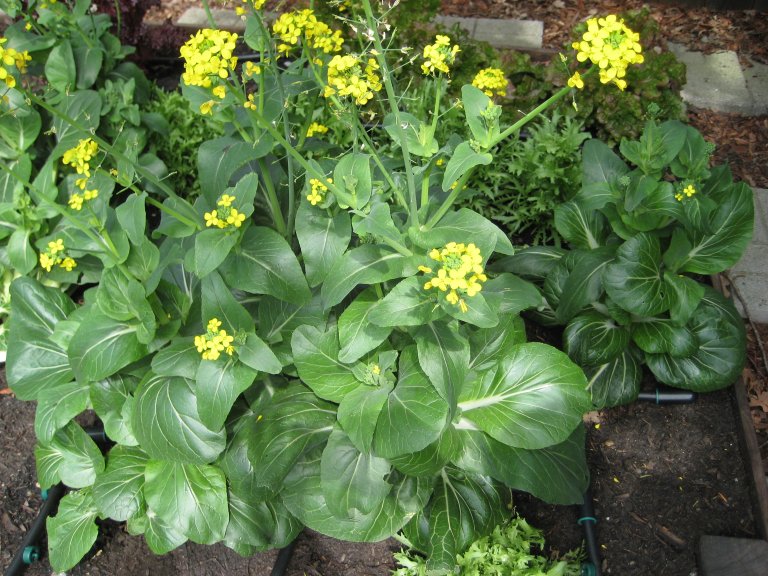
Here is a close-up photo of a bok choy flower:
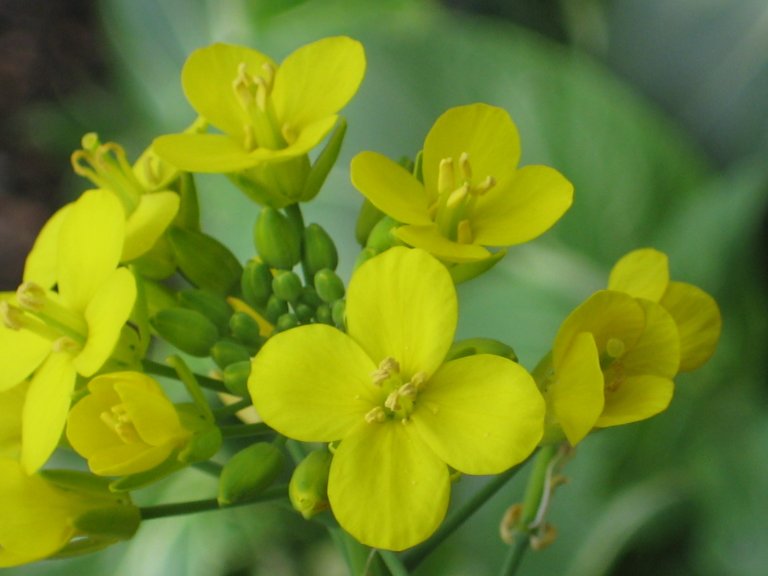
One of the best ways to keep in touch with us is to join our email list. You’ll receive a free copy of Our Top 12 Strategies for Long Term Success on A Raw Plant-Based Diet eBook along with regular information about raw food and plant-based diets and periodic promotions for our classes, events, and other offerings!
March Into April Green Juice
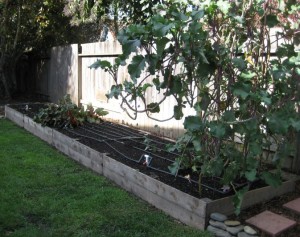 Whew! Rick and I recently returned from teaching 17 days in a row! As always, it was a joy to teach our information to such a fun and enthusiastic group of students. After a short rest, we are now in the process of preparing our raised beds for planting. Here is a photo of our beds filled with compost, awaiting the arrival of new starts:
Whew! Rick and I recently returned from teaching 17 days in a row! As always, it was a joy to teach our information to such a fun and enthusiastic group of students. After a short rest, we are now in the process of preparing our raised beds for planting. Here is a photo of our beds filled with compost, awaiting the arrival of new starts:

We still have some frisée greens growing in our beds, so I made a green juice with them and some ingredients from our local natural food market:
7 stalks of celery (12” long)
1 lemon, peeled
1 medium cucumber, 8” long
4 cups frisée greens
Here are some of the nutrients found in these ingredients:
| Green Juice Ingredients | Adult Daily Values | |
| Calories | 175 | |
| Calcium | 353 | 1000 – 1200 mg |
| Iron | 3.9 | 8 – 18 mg |
| Zinc | 2.8 | 8 – 11 mg |
| Magnesium | 125 | 310 – 420 mg |
| Potassium | 2351 | 4700 mg |
| Protein | 8.5 g |
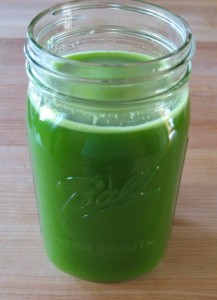
One of the best ways to keep in touch with us is to join our email list. You’ll receive a free copy of Our Top 12 Strategies for Long Term Success on A Raw Plant-Based Diet eBook along with regular information about raw food and plant-based diets and periodic promotions for our classes, events, and other offerings!
Goji Berry Plants – 4 Months Old
Our goji plants have grown quite a bit since we planted the seeds in June – it's time for transplanting 🙂
One of the best ways to keep in touch with us is to join our email list. You’ll receive a free copy of Our Top 12 Strategies for Long Term Success on A Raw Plant-Based Diet eBook along with regular information about raw food and plant-based diets and periodic promotions for our classes, events, and other offerings!



